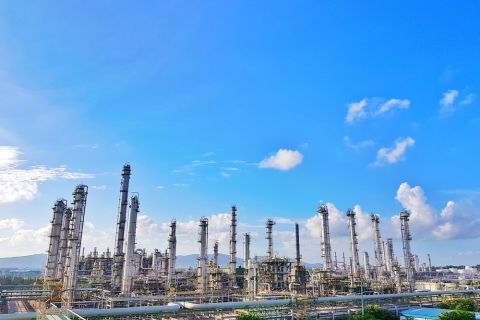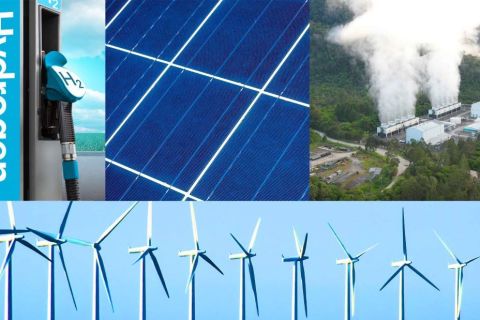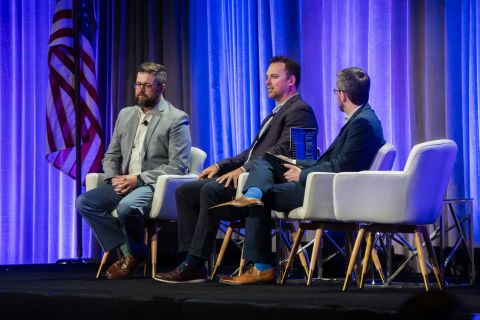For some time 4-D seismic has been recognized as a useful tool to monitor fluid movement in the reservoir. Given the continuance of relatively high commodity prices, operators are now looking closely at the potential for time-lapse seismic as a reservoir management tool to maximize the economic return on their assets.
This is especially true in the North Sea, which is the site of the bulk of 4-D activity today,
 |
|
| Figure 1. An ROV places a node on the seafloor at approximately 6,500 ft (2,000 m). (Images courtesy of Fairfield Industries) |
The Gulf of Mexico looms as fertile territory for some fairly intense 4-D seismic action near-future, particularly in the deep water. The assets tend to be vast, and the well costs tally multiple millions of dollars, meaning there’s little room for error when it comes to well placement. Reservoir management via surveillance using 4-D seismic likely will become essential from the get-go in order to maintain project economics.
“In places like the North Sea, seismic surveillance has already proved to be a valuable tool for reservoir management,” noted Jerry Beaudoin, project manager of OBS technology at BP. “And now it’s starting to take off in the Gulf of Mexico.”
The takeoff no doubt will be spurred by finely honed node technology — such as Fairfield Industries’ commercially proven Z3000 system — to acquire the seismic data.
Each node in this system is an independent, self-contained unit with a battery and a clock. When coupled to the seafloor to collect data, the lack of any hard link between units circumvents noise issues common to most cable systems, enhancing vector fidelity. The nodes are deployed on the seafloor via remotely operated vehicles (ROVs). A dual-source vessel completes the equipment trio.
“Node placement using ROVs ensures positional accuracy and repeatability,” said Steve Mitchell, vice president and division manager at Fairfield. “Repeatability is a necessary prerequisite for high-quality 4-D seismic, and every node survey as a byproduct is a 4-D survey.”
BP’s recent at-scale field trial to image the subsalt environs at its deepwater Atlantis field in the Gulf was an unprecedented nodal implementation in both scope and water depth.
The program used the Z3000 system, which acquires true all-azimuth seismic and is
 |
|
| Figure 2. The Z3000 bottom plate on the assembly line. |
The defining moment documenting the repeatability of the units occurred when the Atlantis geoscientists examined the difference between the ROVs’ estimate of position when the nodes were placed on the seafloor and their estimate of position when retrieved. Seventy-five percent of the nodes had differences of 16 ft (5 m) or less in water depths close to 7,220 ft, according to Beaudoin.
A small footprint enhances the appeal of nodes. This can be a crucial factor in areas with significant infrastructure, where the environment can prove quite hostile and expensive for ocean bottom cable (OBC) or streamer vessels for data acquisition. Even the deepwater Gulf already has its share of infrastructure.
When seismic is acquired over a field using ROV-deployed nodes for reasons other than 4-D, the survey also provides a baseline for future time-lapse surveys because of the inherent repeatability factor. In other words, the node survey in essence automatically serves a dual purpose.
Atlantis is a prime example. “The purpose at Atlantis was structural,” Beaudoin emphasized. “But part of the thinking going forward is that we have acquired a baseline survey because we hadn’t even hit first oil.”
Wide-azimuth data were needed at Atlantis to meet the objective to overcome imaging problems related to illumination of the subsalt structures. The situation demanded this particular nodal solution.
“The way Fairfield built these nodes, they’re a nice disc, so they would have an azimuthal advantage,” said Rodney Calvert, chief scientist in geophysics at Shell. “The nodes are azimuthally symmetric and give equal fidelity in all directions. That’s an advantage for multi-azimuth shooting as the response potentially is more even.”
Time-lapse surveys likely will become de rigueur for all fields of a certain size in order to test the up-front predictions of the reservoir model. These predictions are fundamentally uncertain given there is little production to check against and few wells drilled.
Price and data quality rank high on the list of issues to consider when planning for these surveys.
“When you put in a permanent cable, you pay a high price up front,” Beaudoin noted. “Early on you probably want to do a lot of testing, but as the reservoir becomes predictable, the need for time-lapse will diminish, so there is a diminishing need for the cable.
“Another problem is if you use streamers, generally speaking you have facilities out there to get the oil out that are obstacles to streamer surveys,” Beaudoin added. “You’ll have holes over some of the area, so the quality of the time-lapse is not what it would be otherwise.”
This opens up another application for nodes, according to Mike Spradley, acquisitions marketing manager at Fairfield.
“We see nodes as a natural supplement to streamer data in projects where certain areas of
 |
|
| Figure 3. A depiction of the ROV vessel deploying nodes while the source vessel is shooting. |
As the industry continues its attempt to wrest the last molecule from the reservoir, enhanced oil recovery (EOR) applications appear destined to increase in number. This holds true even in the deepwater Gulf, where operators already are looking at the potential for water injection, CO2 floods, surfactants and such, according to Calvert.
Time-lapse seismic will be invaluable to monitor the movement of the injected substance.
“When you inject something into the subsurface, it never goes where you expect it to because the reservoir isn’t homogeneous,” Calvert said. “When you do EOR injection, it’s very valuable to see where it’s going, and that’s where 4-D comes in — 4-D and EOR will go hand-in-hand.”
Given their proven repeatability and flexibility, small-footprint nodes appear slated to become the tool of choice to monitor the injected fluids moving through the reservoirs, particularly given the expanding infrastructure around these deepwater fields.
Modular nodal systems have the potential to initiate a whole new business model for reservoir surveillance in the deepwater Gulf, according to Beaudoin.
“I think that as a technology solution, nodes are ideal for field development and reservoir surveillance,” he said. “As a commercial solution, I think the industry needs to look at the drilling rig contract as a model for how we commission repeat surveys.
“If we could get that same mindset about seismic surveillance that we have for drilling rig contracts, I think people would make long-term contracts with the providers of node seismic,” Beaudoin said. “One wrinkle could be that some of the major leaseholders or field owners in an area get together and do this jointly and enter into a long-term contract and rotate the node asset amongst their different assets for reservoir surveillance — the contract model is where we need to go in time-lapse field development and reservoir management using nodes.”
Recommended Reading
US EPA Expected to Drop Hydrogen from Power Plant Rule, Sources Say
2024-04-22 - The move reflects skepticism within the U.S. government that the technology will develop quickly enough to become a significant tool to decarbonize the electricity industry.
CEO: Linde Not Affected by Latest US Green Subsidies Package Updates
2024-02-07 - Linde CEO Sanjiv Lamba on Feb. 6 said recent updates to U.S. Inflation Reduction Act subsidies for clean energy projects will not affect the company's current projects in the United States.
DOE Considers Technip, LanzaTech For $200MM ‘Breakthrough’ Technology Award
2024-03-25 - The U.S. Department of Energy funding will be used to develop technology that turns CO2 into sustainable ethylene.
Energy Transition in Motion (Week of March 22, 2024)
2024-03-22 - Here is a look at some of this week’s renewable energy news, including a new modeling tool for superhot rock.
From Satellites to Regulators, Everyone is Snooping on Oil, Gas
2024-04-10 - From methane taxes to an environmental group’s satellite trained on oil and gas emissions, producers face intense scrutiny, even if the watchers aren’t necessarily interested in solving the problem.



